Honda Metropolitan / Jazz (CHF50) Scooter
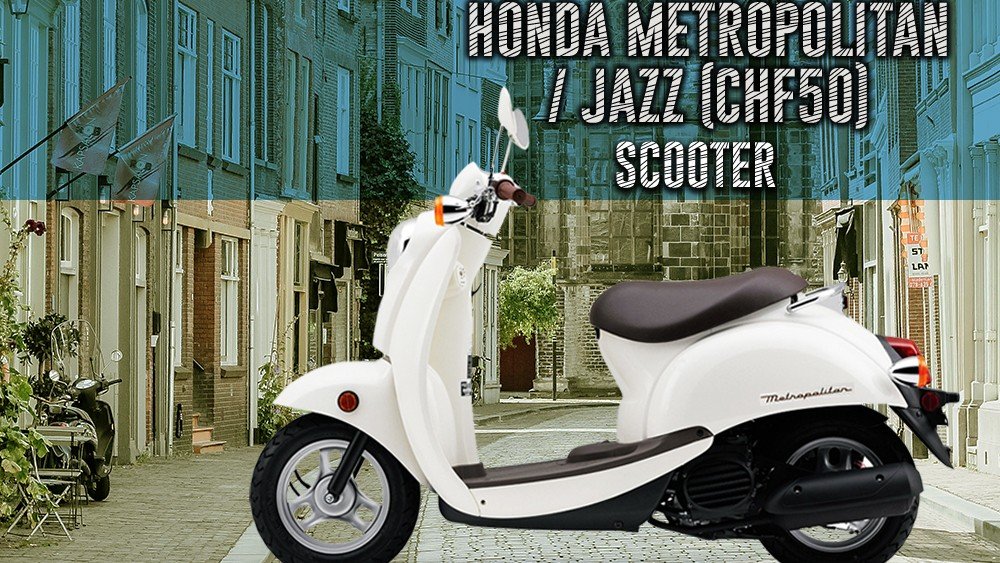
Honda Metropolitan / Jazz (CHF50) Scooter
According to a few Vespa enthusiasts, Japanese manufacturers innovated and brought quality to the scooter market in the 80s but got lazy in the 90s due to the lack of competition. The Japanese's fifteen-year-old designs lost their charm when the Vespa returned in 1999. This led them to decide to bring in a new generation of products in the competition, like the CHF50. Perhaps this is true, but the collapse of the scooter market in the late 80s did create an environment that was very unappealing to introduce scooters into during the 90s.
The market began growing in the new 2000s and Honda’s introduction of the Metropolitan (Jazz in Canada) in 2002, was directly aimed at hopeful Vespa customers. The Metropolitan has Vespa-inspired retro styling with better features like liquid cooling and the great fuel economy, reliability, and lifespan of a 4-stroke engine. Also, costing $1000 less than Vespa’s 50cc ET2, the Metropolitan was at a clear advantage.
The CHF50's 90-100mpg was considerably better than the ~65mpg that Vespa's ET2 50 and Yamaha's 2-stroke Vino 50 could achieve. In 2006, the ET2 and Vino 50 2-stroke models both ended up being replaced by 4-stroke models (LX 50 and Vino 50 4-stroke).
Honda Metropolitan GENERATIONS
Honda has sold two generations of the Metropolitan. The first generation CHF50 was sold from 2002 to 2009 in America. This scooter was named Metropolitan in the USA and Jazz in Canada. In 2013, Honda introduced a completely different second-generation NCH50. The second-generation Metropolitan uses the Giorno moniker in Canada and overseas.
Internationally, the Metropolitan(USA) and Jazz(Canada) used other names which were Crea and Scoopy. From 2002 to 2006, Honda also sold a limited-speed / moped variant in the USA called Metropolitan II. The model code for Honda was CHF50P, with P being Honda's long used indicator of a moped restricted model. This was restricted to 25mph through a series of restrictions to the variator, ECU, intake, and camshaft. 2009 was the last year for this model CHF50 in Canada and the USA, although it was available until a few years later because of excess inventory from the 2009 crash of the scooter market.
Honda Metropolitan MOTOR
The 2002 to 2009 Metropolitan / Jazz used a short case (small rear wheel) version of Honda’s modern GET2 engine. This motor was also used in the Honda Ruckus, but it has a longer swingarm. Overseas, the GET2 has used a wide range of Honda’s 4-stroke 50cc’s. Honda Japan developed the GET2 and it featured a number of neat innovations. Honda slipped a tiny radiator for this liquid-cooled engine directly onto the right side of the engine next to the flywheel. Honda was able to create an exceptionally strong liquid cooling system by using a fan on the flywheel that blew on the radiator, without having coolant hoses routed all over the scooter. Another innovation was the double use of the alternator as the starter motor, thus eliminating the traditional electric starter motor. Honda devised a way to run power back through the alternator and thus spin the engine to start it. This simple system was noiseless and saved the weight, cost, and complexity of a normal starter motor.
The 2002-2005 Metropolitan had a reasonable maximum speed of 38mph, the same as the restricted Vespa ET2. Honda rates the Metropolitan at 4.9hp, while the ET2 is rated at 5.1hp, but the Metro has a weight benefit of 40lbs (176lbs vs. 216lbs) making it rather similar to the ET2 but slower than the Yamaha's Vino. For the 2006 model year, Honda made a few changes to the Metropolitan, which increased the maximum speed to 42-43 mph. Such improvements included a higher redline (8850 RPM vs. 8000 RPM), a new carbohydrate tip, a revised ECM, and an upgraded crankcase ventilation device.
Perhaps more important than the top speed increase was the new crankcase ventilation system. This easy change eliminated a huge problem with the GET2 engine, which was the ineffective flushing of gas vapors from the crankcase. In any engine, gas fumes sneak past the rings and into the crankcase when the motor is cold. Unfortunately for the Met, it wasn’t able to properly expel these fumes so they would contaminate the oil fairly quickly. This occurs because the 2002 - 2005 GET2 engine tries to breathe through a single hose - which is like you trying to breathe through a 10-foot snorkel. It works if the snorkel is short, but if it’s too long then you just cycle the same dirty air over and over. In the Met, gas fumes inside the engine are trying to escape out the same small hose that the fresh air is arriving via. This flat out didn’t work very well, so Honda switched to a two hose system with an integrated one-way valve to radically improve the engine venting for 2006.
In Metropolitans sold between 2002 to 2005, oil was quickly polluted, which ensured that the primary crankshaft bearings (usually the left one) would ultimately die. Unfortunately, it is common for such crankshaft bearings to fail after just 6000 miles, but twice this can be achieved with regular maintenance (oil changes). This scooter would basically need a complete engine rebuild. This can be done for $150 in parts if you’re doing it yourself but many owners don’t have the expertise and getting Honda to rebuild your engine is a $1000 labor job. If you do want to tackle this job, order a new crankshaft (it comes with bearings) and you’ll also need a new woodruff key, crank seals (especially the variator side), and a head gasket. You’ll probably want to replace the rollers and belt while you’re in there, and maybe take a look at the condition of the rings.
DESIGN AND AMENITIES
The original Metropolitan (CHF50) used plastic body panels mounted to light but a strong aluminum frame. The use of aluminum played a large part in achieving a low total weight of 176 lbs. The CHF50 is over 40 lbs lighter than a steel-bodied Vespa, and also allows easier and cheaper replacement of damaged body panels.
The early Metropolitan didn’t have a glovebox or any sort of cubby holes in the leg shield area, but it did have a nice amount of space under the seat where most full-face helmets will fit. Honda wisely located the fuel tank inside the floorboard, so all of the under-seat volumes have been made available as storage space.
Drum brakes cause lazy braking since they use both front and rear in the Metropolitan. Larger riders can upgrade the front brake for a few hundred in aftermarket parts. The dash of the Metropolitan is pretty standard fare. There’s a speedometer, fuel gauge, odometer, and a few indicator lights. Honda could include minor things such as a trip odometer, tachometer, and/or clock. Over its run, the Metropolitan was sold in a wide range of colors, patterns, and two-tone color schemes. Scroll to the bottom of the page for a listing of these options.
Honda Metropolitan DISCUSSION
In addition to the aforementioned Vespa and Yamaha competitors, a few other scooters worth looking at are the models from Taiwan brands Kymco, Genuine/PGO, and SYM. Competing scooters include Genuine Buddy (aka PGO Metro), SYM’s Mio 50, Kymco’s Like 50, Sento 50, and Sting 50. The Metropolitan used to be the technological leader, but scooters like Yamaha’s updated 4-stroke Vino have been better by offering fuel injection and 3 valves. Still, the GET2 engine used by the Metropolitan is a solid design post-2006 when the crankshaft bearing failure issue was addressed.
Compared to the second generation (NCH50) Metropolitan, the original Met is a higher-end machine. Despite not having the fuel injection of the NCH50, the CHF50 Met boasts a high-end aluminum frame (vs. a steel tube frame), liquid cooling, and more under-seat storage thanks to the fuel tank located on the floor. They’re both good scooters with similar performance numbers, so the decision mostly rests on price and styling.
If you’re looking for a Metropolitan/Jazz, you would want to select a 2006 or newer scooter. These engine ventilation problems in the first few years are nice to avoid, plus the newer ones are several mph faster. The Metropolitan has a great reputation as a well-built, quality machine and is a smart buy in the used market. The second generation of Metropolitan offers better fuel mileage due to its PGM-Fuel Injection, but otherwise, it is a lower cost scooter with a steel tube frame instead of an aluminum one, no liquid cooling, and less under-seat storage.
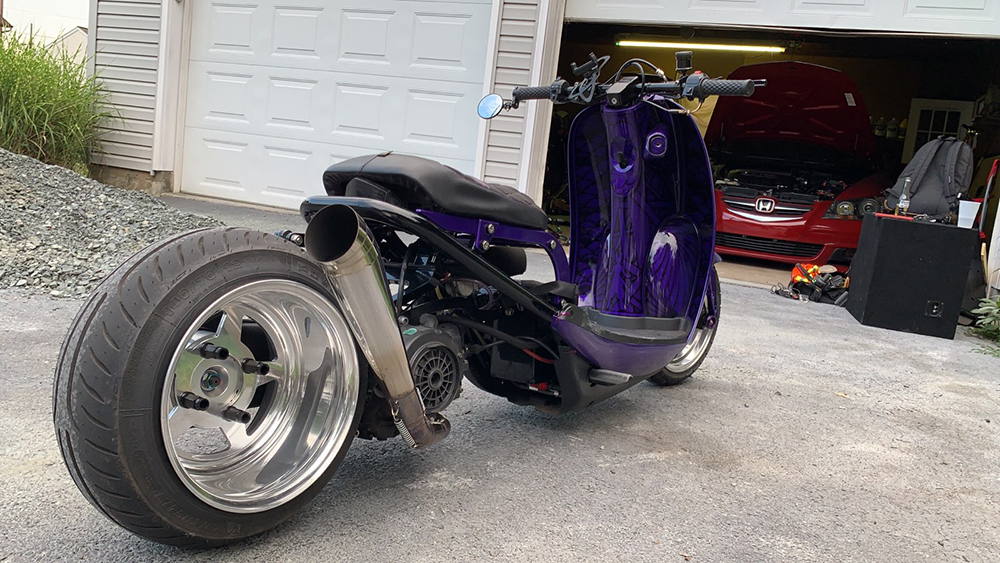 Slick Purple Designed 'Honda Metropolitan 2002' kudus 'Willie #MetroGang12'
Slick Purple Designed 'Honda Metropolitan 2002' kudus 'Willie #MetroGang12'
And there are many more high-quality aftermarket scooter parts available at the NCY STORE. So if your OEM parts fail or are bogged down, let NCY Performance Scooter Parts be your source for finding better and upgraded replacement parts for your Honda Metropolitan Scooter.
Check out the latest Honda Metropolitan aftermarket performance parts and accessories, click here.

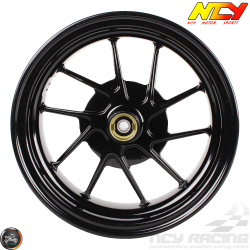
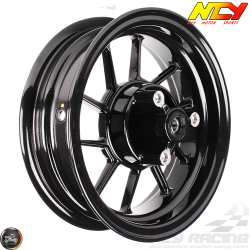
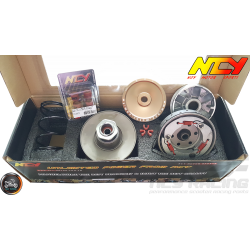
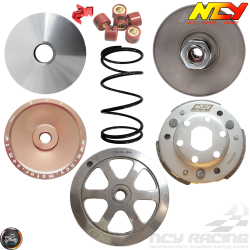
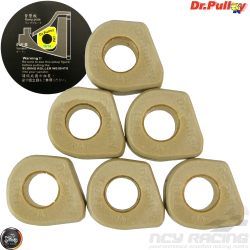
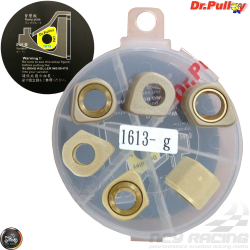
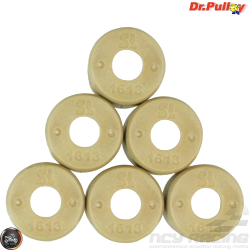
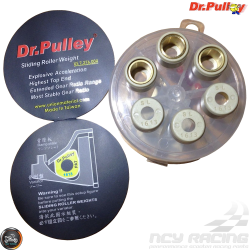

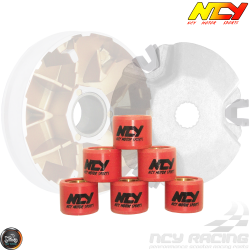
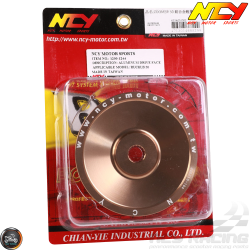

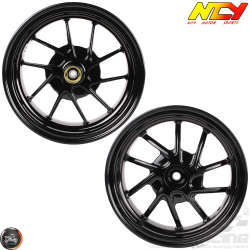

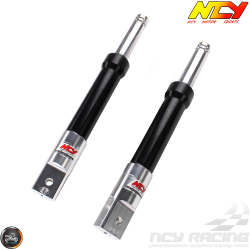
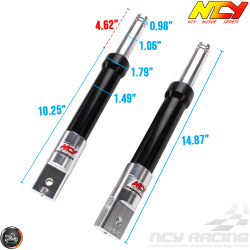
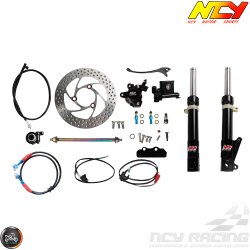
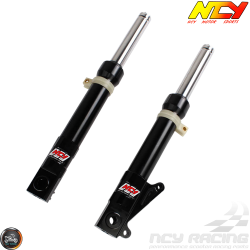
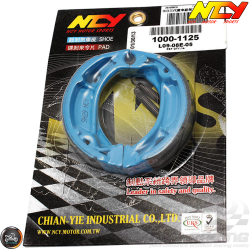
42 Comment(s)
Looking for a chromed version of a 2018 Honda Metropolitan muffler cover, part number 18318-GJB-J00. Do you know anyone who has this? Thank you.
Rick Mitchell
Baltimore, MD
How much longer will we have to wait for 2016-2024 NCW50 performance upgrades?
Looking for seat frame to except jock strap, for my metruck
1
1
1
1
1
1
1
1
1
1
1
1
1
1
1
1
1
1
1
1
1
1
Thanks for this usefull article, waiting for this article like this again.
For example, clients can enjoy the companionship of a beautiful and charming escort, who can provide them with personal attention and affection.
Here you'll find perfect girls who fun nothing more than to assist you in reaching your goals. Perhaps we might refer to this location as paradise. Our remarkable splendor Presenting the most glamorous Call Girls in Islamabad. We have more than ten years of experience in the New Islamabad sexy call girls market. Booking for contact us: ( islamabaddavi.com )
Our agency in Lahore provide the most beautiful sexy call girls for you. Our are a sexy Lahore call girl agency that offers our customers excellent service. Make the most of everything we have to offer; we're here to provide you with an unforgettable experience and to make you happy. We are skilled in ensuring that your stay in our agency is enjoyable and rewarding. Our girls will take care of whatever you need them to, providing you with a memorable experience to remember back home. For more details contact us : ( lahoreglamour.online )
You can have the ideal companion for a romantic evening at home, in a hotel room, or at a private business function with our Karachi Call girls. You may be sure that you will find a sexy call girls who lives up to your expectations because our service specializes in delighting all kinds of lovely girls. It's not too late to give us a call if you're find for a pleasant night of only sex or time with someone who could make a fantastic and cute sexy girlfriend! For more details contact us : ( karachilady.online )
You'll be happy to learn that there are many attractive and lovely Chennai escorts available here. If you must satisfy your sexual cravings and are looking for pleasure, you may choose from a large selection of call girls on our website. So how about we try to understand the female artwork and secrets of our Chennai escorts.
We provide high class Escorts Service in Chennai whom you can keep as your girlfriend. Get our Chennai Call Girls in your hotel or room so that you can fulfill your every desire. Book your meeting now.
From discreet hotel bookings to personalized itineraries, the agency goes above and beyond to ensure that clients have a memorable and enjoyable time with their chosen escort.
With a focus on customer satisfaction, Delhi Escorts Service strives to create a safe and comfortable environment for clients to explore their desires without judgment or shame.
Despite the misconceptions surrounding escort services, Delhi Escorts Service aims to provide a transparent and professional service to clients.
1
1
1
Let me introduce you to a detailed overview of how you can find call girls service in India ! So whether it is that special restaurant or the better quality service on offer then you are welcome here.
what you bargain for.
1
Allpaanel has rapidly emerged as a leading platform in the online gaming industry. With a diverse selection of games, a seamless user experience, robust security measures, and excellent overall value, it stands out as a top choice for gamers.
It’s difficult to acquire knowledgeable men and women within this topic, and you could be seen as you know what you are dealing with! Thanks
Gold365 is an online platform that has garnered attention for its diverse gaming options and user-friendly interface. The platform offers a wide array of casino games, including traditional favorites like roulette, poker, blackjack, andar bahar, and teen patti. Additionally, it provides live sports opportunities on events such as cricket, basketball, football, tennis, and greyhound racing.
Betbhai9 is a leading online betting platform that caters to sports enthusiasts and casino lovers alike. It offers a diverse range of betting options, including cricket, football, and live casino games, all on a secure and user-friendly interface. Known for its transparency and quick payouts, Betbhai9 ensures an exceptional betting experience. With exciting promotions, dedicated customer support, and easy registration, Betbhai9 is your ultimate destination for secure and entertaining online betting.
Mahadev Book ID is an online betting platform that provides users with access to sports betting, online games, and other games activities. It offers a secure and user-friendly interface for placing bets on various sports and live games. Users can create an account, deposit funds, and start betting with ease.
https://420marijuanathrives.com/product/buy-white-ice-moon-rock/
https://420marijuanathrives.com/product-category/psilocybin-mushrooms/
https://420marijuanathrives.com/product/buy-ecstasy-pills/
https://420marijuanathrives.com/product-category/vapes-and-carts/buy-dankwoods-online/buy-backwoods-prerolls-online/
https://420marijuanathrives.com/2022/02/09/friendly-farms-carts-real-vs-fake/
https://420marijuanathrives.com/product/bloom-carts-review/
https://420marijuanathrives.com/product/glo-carts-fake-vs-real/
https://420marijuanathrives.com/product/packwoods/
https://420marijuanathrives.com/product/off-white-carts/
https://420marijuanathrives.com/product/supreme-carts-for-sale/
https://420marijuanathrives.com/product/frosting-cake-strain/
https://420marijuanathrives.com/product/big-chief-carts/
https://420marijuanathrives.com/product/buy-nipsey-hussle-marathon-og-online/
https://420marijuanathrives.com/product/white-knuckles-strain/
https://420marijuanathrives.com/product-category/vapes-and-carts/exotic-carts-packaging/
https://420marijuanathrives.com/product/dr-zodiak-carts-near-me/
https://420marijuanathrives.com/product/chronic-cartridges-thc/
https://420marijuanathrives.com/product/mr-nice/
https://420marijuanathrives.com/product-category/vapes-and-carts/buy-tko-extracts-online/
https://420marijuanathrives.com/product/hawaiian-cookies/
https://420marijuanathrives.com/product/jet-fuel-strain/
https://420marijuanathrives.com/product/friendly-farms-carts-for-sale/
https://420marijuanathrives.com/product-category/vapes-and-carts/buy-dankwoods-online/
https://420marijuanathrives.com/product-category/vapes-and-carts/brass-knuckles-cartridge/
https://420marijuanathrives.com/product/facewreck/
https://420marijuanathrives.com/product-category/vapes-and-carts/stiiizy-pods-live-resin/
https://420marijuanathrives.com/product/buy-dmt-vape-pen/
https://420marijuanathrives.com/product/9-pound-hammer-strain/
https://420marijuanathrives.com/product/buy-sun-rocks-online/
https://420marijuanathrives.com/product-category/legal-psychedelics-for-sale/
Gold365 is a premier online gaming platform offering a wide variety of sports and live online games. Known for its secure transactions, exceptional odds, and seamless user experience, it provides exciting opportunities to win big. Whether you’re a beginner or an expert, Gold365 delivers thrilling betting experiences tailored to your preferences.
Tigerexch is a leading online gaming platform offering thrilling wagering opportunities on sports and casino games. Known for its user-friendly design and secure features, it provides competitive odds and live updates to enhance your new experience. Whether you're a seasoned bettor or a beginner, Tigerexch ensures a smooth, exciting journey in the world of online gaming.
Betbook247 ID is a trusted bet website for sports fans and online players. You can bet on popular sports like cricket and football, or try some other games in real-time. The site is safe and easy to use, pays winnings quickly, and is known for being honest. It offers good deals, helpful support, and simple sign-up. If you want a safe and fun place to bet online, Betbook247 is a great choice.
Allpanel777 is a trusted platform for bettors who seek a diverse range of sports and many more games. With its user-friendly interface, secure payment options, and competitive odds, Allpanel777 ensures a rewarding betting journey. The platform also provides excellent customer support and regular promotions, making it a top choice for betting enthusiasts. Explore the exciting features of Allpanel777 and start winning today!
Play 247 is a well-known online gambling platform offering sports betting, online games, and live dealer experiences. It provides a safe and convenient environment for users to place bets on cricket, football, and other major events. With competitive odds and attractive bonuses, Play 247 ensures an enjoyable gaming adventure.
Betbhai9 is a trusted online betting site for sports fans and gamers. You can bet on cricket, football, and live games using a safe and easy-to-use website. We're known for being honest and paying winnings quickly. Our site offers great deals, helpful support, and simple sign-up. Choose Betbhai9 for safe and fun online betting.
Fairplay ID offers a secure and exciting online betting experience with a wide range of sports and other games. Whether you're an experienced bettor or just starting, Fairplay ID ensures fair play, top-notch security, and a user-friendly interface. Start your journey today and enjoy safe, thrilling betting opportunities with Fairplay!
Leave a Comment